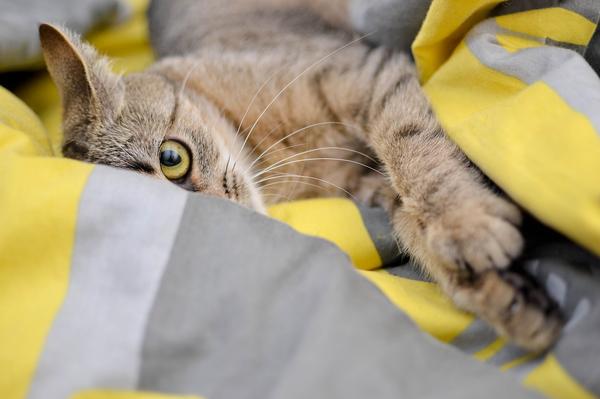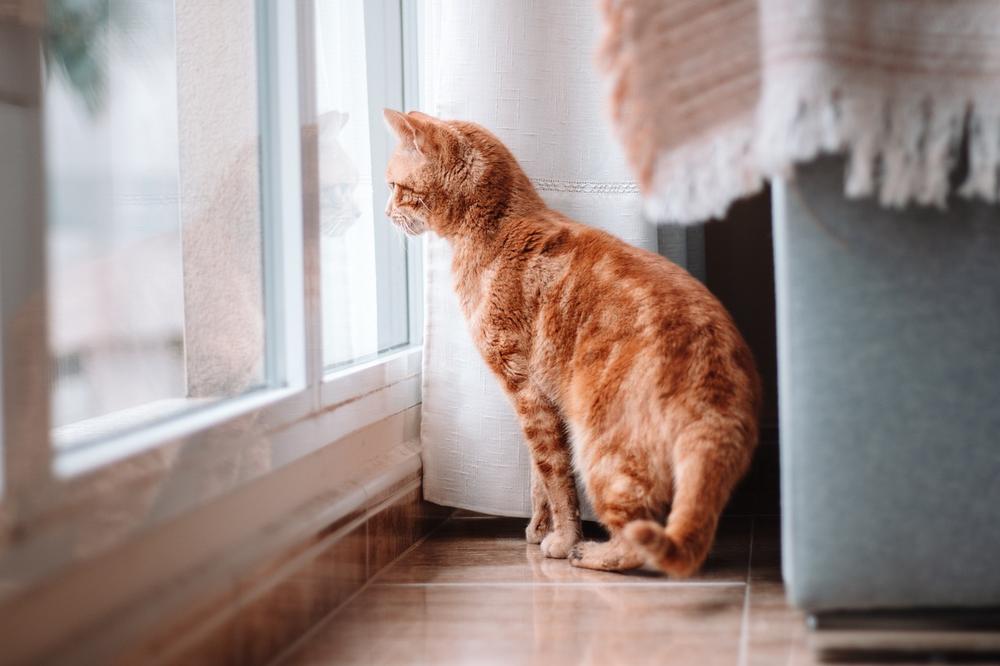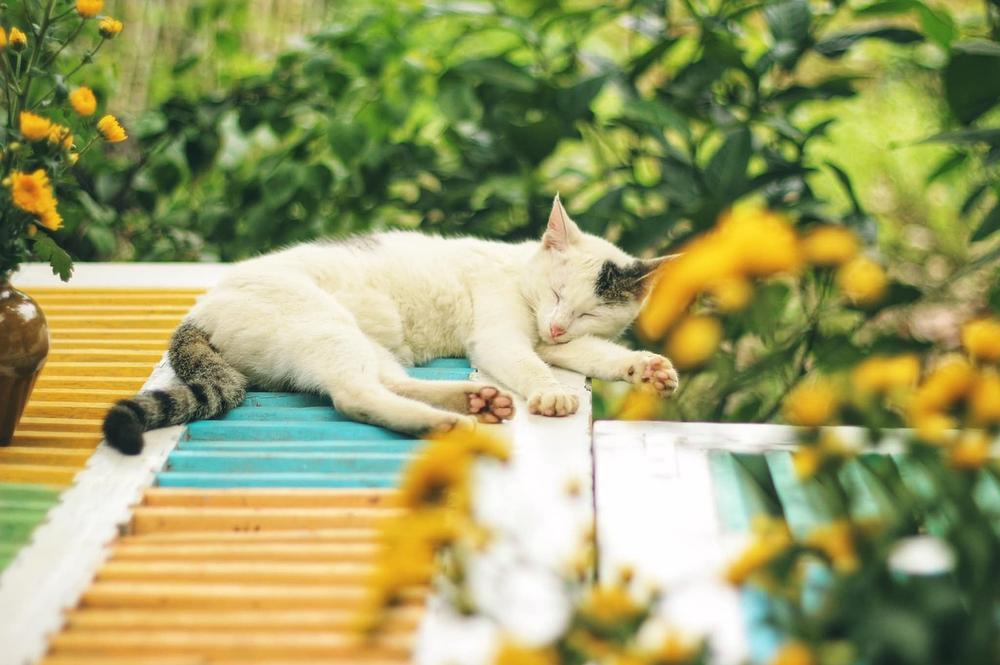Why Isn't Your Cat Affectionate? Seasoned Cat Owner Answers

Tired of feeling like a cold-hearted cat villain?
Been rejected more times than a rejected audition for a rom-com?
Well, get ready to turn that feline frown upside down because in this I Care for Cats guide, I'll spill the secrets to winning your cat's affection. 😺
Let's begin!
Possible Reasons for Lack of Affection From Your Cat
There could be multiple reasons why your cat isn't showing affection.
- Lack of socialization during kittenhood can make a cat less affectionate towards humans.
- Signs of avoidance and aggression can indicate that the cat is not comfortable with human interaction.
- Anxiety may prevent the cat from displaying affectionate behavior.
- The cat's genetics and early socialization period can impact their level of affection.
- Stress and pain can also decrease a cat's affectionate behavior.
- Inadequate socialization during kittenhood might result in cats being less affectionate.
- Changes in appetite and energy levels should be monitored as they can indicate if the cat is sick, which might contribute to their lack of affection.
- Identifying the root cause of the cat's reluctance is crucial in changing their behavior.
Understanding these possible reasons behind your cat's lack of affection can help you address the issue effectively.

Remember, patience and creating a safe and nurturing environment are key to building trust and fostering a more affectionate bond with your feline friend.
Main points I'll expand upon further down this article:
- Offer tasty treats to encourage relaxation and petting.
- Handle and pet kittens frequently to make them more friendly.
- Seek advice from Ask-a-Vet for cats with difficulty accepting physical closeness.
- Make dedicated time for cuddles to teach your cat to enjoy affection.
- Show constant love and affection to rebuild your bond.
- Determine the cause of reluctance and give space to restore affection.
- Understand your cat's personality and preferences for a harmonious bond.
- Recognize and respect different ways cats show affection.
- Build trust by respecting boundaries and offering treats and alone time.
- Ensure a comfortable and safe environment with all essentials provided.
And now, let's explore some practical steps I recommend to increase your cat's affection towards you and strengthen your bond even further...
Tips for Increasing Your Cat's Affection Towards You
Regular grooming sessions strengthen your bond
When you regularly groom your cat, it's an opportunity for both of you to connect and feel closer.
Cats appreciate cleanliness, so taking the time to brush or stroke their fur can make them feel loved and cherished by you.
Plus, it allows you to also keep an eye out for any skin conditions or pests that may bother your furry companion.
By caring for their health while giving them attention, you're building a strong bond that benefits you both.
Tasty treats deepen relaxation
Who doesn't love delicious treats?
Well, your cat is no exception.
Offering your feline friend tasty treats during petting sessions or when they are feeling calm helps create a stronger connection between you two.

However, remember to give treats in moderation and choose healthy options to prevent weight issues or other health concerns.
This way, you can show them love and care through yummy rewards without compromising their well-being.
Be patient and shower me with affection
I, as a cat, may need some extra time to warm up to humans.
That's where your patience plays a vital role.
Dedicate quality time for cuddles, showers of constant love, and respect my boundaries.
Understand that physical contact might take time for me to accept and enjoy. If I appear hesitant or distant, give me space and try to understand why I behave that way. If necessary, consult veterinary professionals who can provide expert advice based on my unique needs.
With your efforts and understanding, we can restore my affectionate nature, deepening our bond as companions.
And that brings me to an important topic that you might find interesting: why your cat might be humping you.
If you're curious about this behavior and want to know how to stop it, I invite you to check out my blog post “Why My Cat Humps Me”.
Understanding Your Cat's Personality and Preferences
To really bond with your cat, it's crucial that you grasp their personality and what they like.
Pay attention to their actions because cats display affection in various ways.
Here are some main points to help you comprehend your cat better:
- When a cat rubs against your leg or an object with their face, they're marking their territory and showing trust in you.
- Certain cats want to be near you but not physically touched. They enjoy your presence but might not always want to be held or cuddled.
- Cats can get stressed and become aloof or seek solitude. During these moments, give them space and let them approach you when they're ready.
- Older cats tend to need less attention and prefer alone time. Respect their independence and don't push for interaction.
- Like humans, cats have phases where they outgrow constant affection. Let them explore other interests while still being there for them when they do want some love.
Developing a stronger bond with your cat is possible by acknowledging their unique qualities and respecting their means of communication. 😺
Long story short: Understanding your cat's personality and preferences is just the beginning. But keep reading, because further down the blog post, I'll give you tips on creating a comfortable and safe environment for your cat. So stay tuned!
And let me tell you a secret that can change everything...
Building Trust With Your Cat
Building trust with your cat is crucial for a strong bond, and here's how you can do it:
- Offer treats as rewards: Cats love treats, and using them as rewards can help create positive associations and build trust over time.
- Respect their personal space: Give your cat plenty of alone time to feel comfortable and respected. Avoid forcing affection or invading their personal space.
- Extend gentle gestures gradually: Start by offering gentle strokes on areas they enjoy, such as behind the ears or under the chin. Gradually extend these gestures to other parts of their body as they become more relaxed.
- Pay attention to their body language: Watch for signs of discomfort or stress, such as flattened ears or a twitching tail. This will help you gauge their comfort level and adjust your approach accordingly.
- Be patient and understanding: Building trust takes time, so be patient and understanding with your cat. Don't rush the process and allow them to set the pace.
- Create a calm environment: Minimize loud noises and provide a safe, quiet space where your cat can relax and feel secure.
- Consistency is key: Consistently offer treats and rewards, respect boundaries, and provide gentle gestures. Trust is built through consistent actions and behaviors.
By adhering to these suggestions, you can enhance the connection with your feline companion and establish a reliable relationship that will endure throughout your lives together.

And it gets even better...
There are more strategies to help build trust with your cat and improve their affectionate behavior.
From providing vertical spaces to creating a comfortable environment, these tips will ensure your cat feels secure and content in their surroundings...
Creating a Comfortable and Safe Environment for Your Cat
To make your cat feel at home and happy, here's what you need to do:
- Give your cat some high places to escape to when they want some alone time.
- Make sure there's always food and water within reach for your furry friend.
- Set up a few litter boxes in different spots around the house, so they can pick their favorite spot.
- Create cozy resting areas with soft beds or blankets to keep them comfy.
- Don't forget to install scratching posts to cater to their natural instincts.
- Offer a variety of toys to keep them mentally and physically stimulated.
- If you're moving to a new place, give your cat some time to adjust to the unfamiliar surroundings.
- Don't rush into bonding activities right away; let them come to you.
- Keep an eye out for any changes in the environment that could affect your cat's behavior.
- When introducing new pets or rearranging furniture, be extra cautious and considerate.
Creating a secure and comfortable environment will help your cat flourish.
You got this! 😉
And now, let's take the next step in creating a strong bond with your cat - engaging in interactive play sessions that will tap into their natural instincts and strengthen your connection!
The Importance of Play and Exercise for Bonding With Your Cat
To forge a strong and lasting bond with your cat, prioritizing play and exercise is paramount.
Here are 10 ways you can achieve this:
- Engage in interactive play sessions using prey-like toys.
- Encourage predatory behavior during playtime.
- Actively participate in play sessions with your cat.
- Use toys that tap into their natural instincts.
- Provide variety in the types of toys you offer.
- Play different games to keep it exciting for both of you.
- Spend quality time playing together daily.
- Incorporate exercise into playtime with toys that require chasing or jumping.
- Observe and learn your cat's preferences and adapt accordingly.
- Use positive reinforcement to reward play and encourage bonding. 🐾
By including these techniques in your daily schedule, you not just offer amusement to your feline friend but also reinforce the bond and comprehension between both of you.

Your cat will appreciate the opportunity to engage in stimulating activities that mimic their instincts, leading to improved well-being and a deeper bond between you both.
So get ready to have some fun-filled play sessions with your feline companion!
And now, let's explore why forcing your cat to be affectionate can actually hinder the bond between you!
Trust me, I've been there...
Common Mistakes That May Push Your Cat Away
Here's how to avoid common mistakes that might push your cat away:
- Don't punish your cat when they misbehave. Instead, be patient and show understanding.
- Let your cat come to you for affection, don't force it. Trust and a strong bond take time.
- Respect your cat's need for personal space. Just like humans, cats enjoy alone time too.
- Don't forget to play with your cat. They love it! Use toys and laser pointers to keep them entertained.
- Stick to a consistent daily routine. Cats thrive on stability, so keep their feeding, grooming, and playtime routines the same.
- Be mindful of strong scents. Cats have sensitive noses, so avoid using heavily scented cleaners or wearing strong perfumes around them.
- Avoid overfeeding. Treats and extra food may seem tempting, but overeating can lead to weight gain and health issues. Follow your veterinarian's recommended balanced diet.
- Don't forget regular vet check-ups. Keeping up with routine visits ensures your cat stays healthy and any potential issues are caught early.
You'll establish a loving and peaceful bond with your cat if you steer clear of these errors.
Remember, being patient and understanding is key to a stronger bond with your furry friend.
And now, let me tell you how to recognize and interpret these affectionate signs from your cat!
Signs of a Happy and Content Cat
A relaxed body posture, with a loosely curled tail and soft eyes, tells you that your cat is at ease.
Cats show their affection through positive body language and vocalizations. By observing and interpreting these subtle signals, you can understand just how much your cat cares about you.
So pay attention to those gentle nudges and purrs. They are more than just feline quirks; they are expressions of love from your furry companion.
And remember, the bond between humans and cats is a special one - a connection built on trust, understanding, and endless cuddles.
And that wraps up today's article.
If you wish to read more of my useful articles, I recommend you check out some of these: Why Is My Cat Obsessed With My Feet, Do Cats Protect Their Owners, Why Do Cats Knock Over Their Food Bowls, Is Purring Involuntary in Cats, and Why Is My Cat Hiding in the Closet
Talk soon,
-Sarah Davis